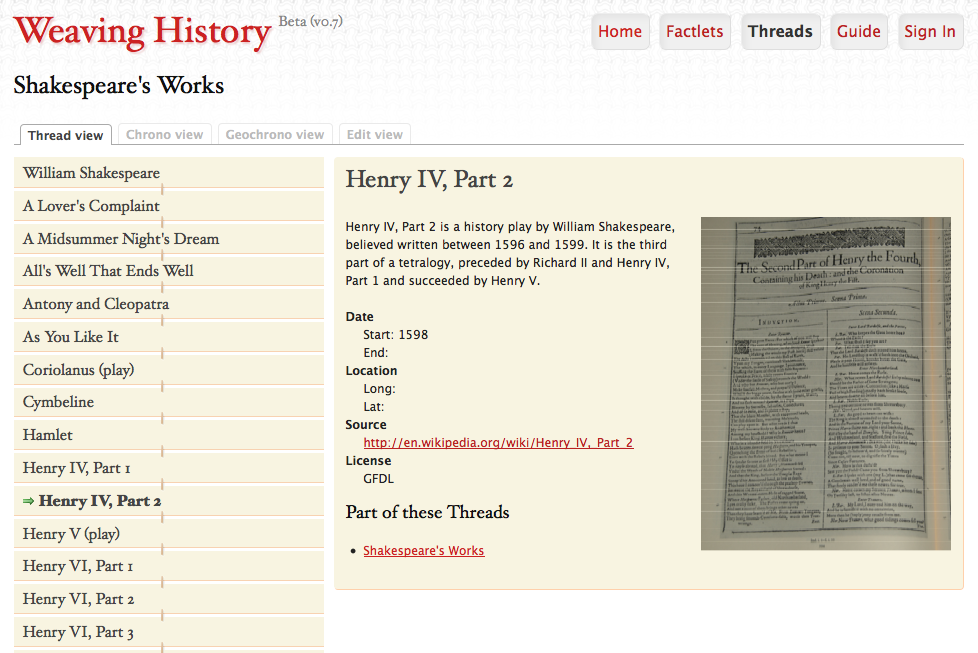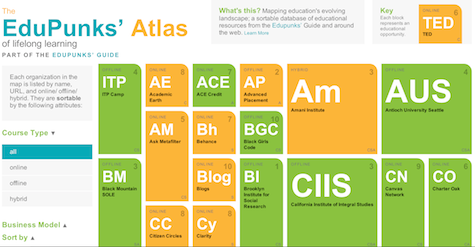In part of a desperate effort to dive back into the blogosphere and try to get caught up on my reading, I came across this interesting little tool recently released to beta by the Open Knowledge Foundation: Weaving History.
The gist of the tool is that it enables you to create what the foundation calls ‘factlets‘ that contain “information about historical events, persons, and so on, which you can string together to create historical ‘threads‘. These threads can then be visually represented on maps and timelines.”
You can only get a partial feel for the result through a still image, but here, for example, is a screen shot of the factlet for Shakespeare’s Works.
Weaving History struck a chord with me because it was precisely this sort of activity that, as a teacher of great books of the western world, first opened my eyes to the power of computer-based multimedia as a teaching and learning tool. Of course, back in those days I was using CD-ROMS on my Mac to put together the same sort of ‘factlets’ that Weaving History facilitates and would then use them in conjunction with teaching The Inferno or Madame Bovary to help put the works in context. (Context, of course, is such an important part of learning on so many levels!)
If you are trying to get a quick, high-level sense of context and timeline around a person, event, or place about which you are learning, this may be a good tool to have in your learning mix.
Jeff Cobb
Mission to Learn
P.S. – Follow Mission to Learn on Twitter at https://twitter.com/missiontolearn





